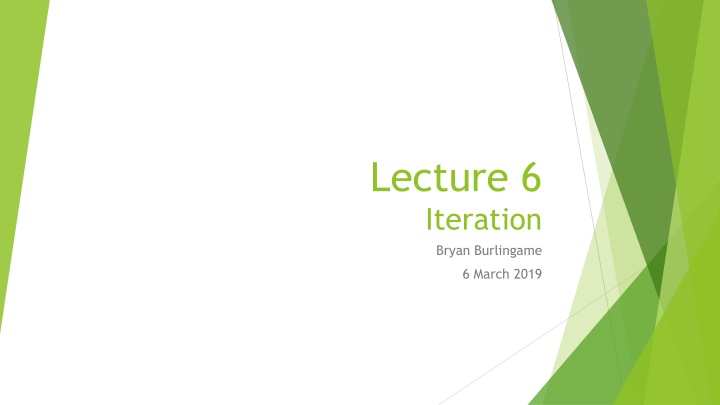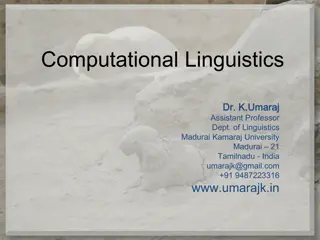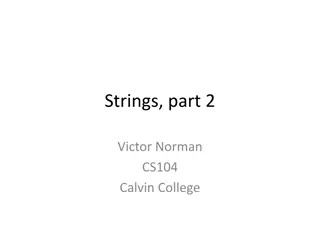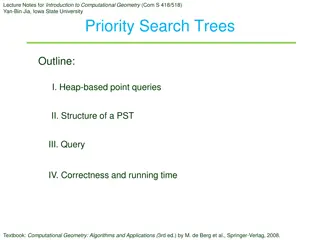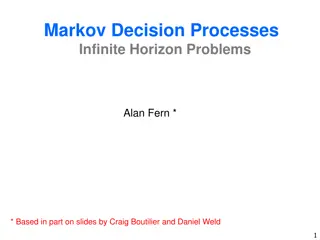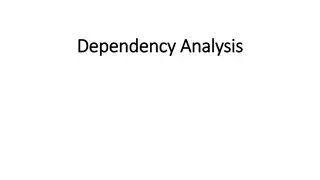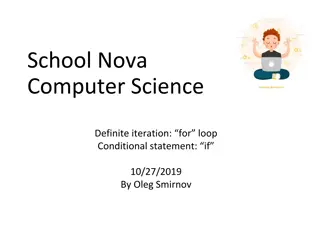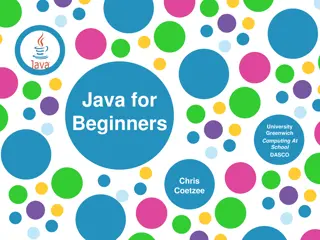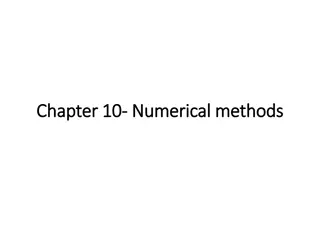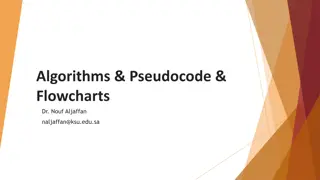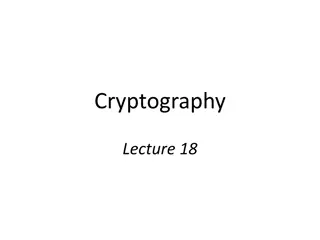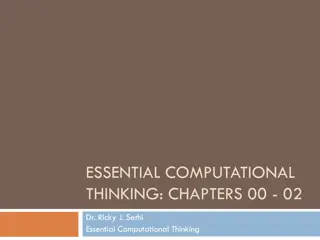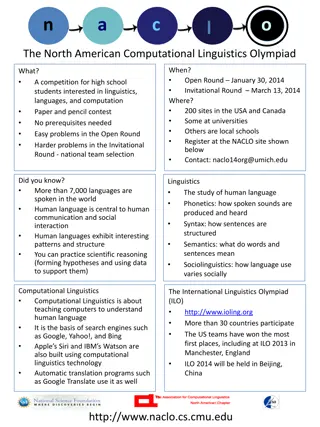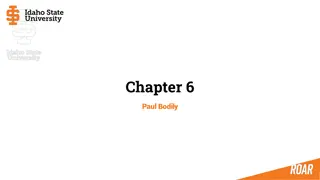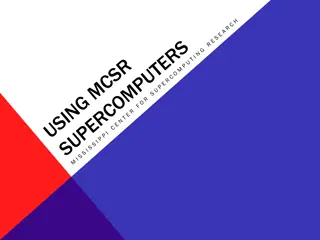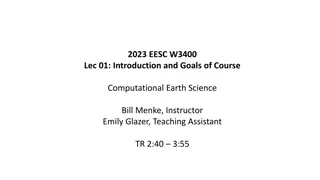Iteration in Computational Processes
In this lecture, we delve into the concept of iteration, exploring why it is necessary despite recursion, and the limitations of recursion. Iteration involves the repetition of a computational process, offering efficiency in code execution. The session also covers the review, learning objectives, and homework assignments, providing a comprehensive understanding of the topic within the realm of programming.
Download Presentation

Please find below an Image/Link to download the presentation.
The content on the website is provided AS IS for your information and personal use only. It may not be sold, licensed, or shared on other websites without obtaining consent from the author.If you encounter any issues during the download, it is possible that the publisher has removed the file from their server.
You are allowed to download the files provided on this website for personal or commercial use, subject to the condition that they are used lawfully. All files are the property of their respective owners.
The content on the website is provided AS IS for your information and personal use only. It may not be sold, licensed, or shared on other websites without obtaining consent from the author.
E N D
Presentation Transcript
Lecture 6 Iteration Bryan Burlingame 6 March 2019
Announcements Homework 4 due up front Read Chapter 8 Homework 5 due next week
Learning Objectives Discuss iteration Connect iteration to summation
Review So far, we have discussed Values - numeric and string Operators a manner to calculate some result from a set of values Variables the ability to store a value for future use Recall: we can reassign a variable to a different value throughout our program (this will come in useful later, today) Functions segments of code with defined interfaces we can use to partition the process of programming Recursive functions functions which call themselves, creating repetition Decision making choosing which segment of code to run, based on some boundary criterion This defines a Turing complete language with these operations, we can direct a computer to do anything a computer can do
Review So far, we have discussed Values - numeric and string Operators a manner to calculate some result from a set of values Variables the ability to store a value for future use Recall: we can reassign a variable to a different value throughout our program (this will come in useful later, today) Functions segments of code with defined interfaces we can use to partition the process of programming Recursive functions functions which call themselves, creating repetition Decision making choosing which segment of code to run, based on some boundary criterion This defines a Turing complete language with these operations, we can direct a computer to do anything a computer can do
Iteration (Repetition) Iteration: repetition of a computational process We already have recursion, why do we want other ways of repeating code segments? What s the limitation of recursion?
Iteration (Repetition) Iteration: repetition of a computational process We already have recursion, why do we want other ways of repeating code segments? What s the limitation of recursion? Recursion is expensive requires many extra compute cycles and requires the computer to track all the waiting function calls On my install of Jupyter, the stack blows up on the 2,966th recursion attempt
Simple Repetition We can repeat a code segment using a simple repetition recipe based on the for keyword for iterates over the members of a collection of items i.e. a for loop repeats a segment of code one time for each value in a set of values, changing the value of an iterating variable on each loop The variable which changes values is called an iterator We will revisit for many times
Simple Repetition We can repeat a code segment using a simple repetition recipe based on the for keyword i is the iterator for iterates over the members of a collection of items range creates a list of integers from 0 to (n-1) i.e. a for loop repeats a segment of code one time for each value in a set of values, changing the value of an iterating variable on each loop The variable which changes values is called an iterator We will revisit for many times
Iteration for specifically iterates over a collection of items, what if we want to repeat on some other condition? while keyword allows for repetition based on an arbitrary condition Looks like if, but repeats instead of only running once What would happen if the i += 1 line didn t exist?
Iteration for specifically iterates over a collection of items, what if we want to repeat on some other condition? while keyword allows for repetition based on an arbitrary condition Looks like if, but repeats instead of only running once What would happen if the i += 1 line didn t exist? The boundary condition is never violated, creating an infinite loop
Jupyter Notebook The * indicates this cell is still running
Jupyter Notebook Execution can be terminated with the Stop button
Break It is possible to stop a loop partway through, using the break instruction Without the break, this would be an infinite loop
Break It is possible to stop a loop partway through, using the break instruction Without the break, this would be an infinite loop Here, I disagree with the esteemed Mr. Downey Break should be rare, not common We already have ways to invert logic using negation (!, not) By placing the boundary in the middle of the loop, we make debugging an error harder
Series Approximations For many mathematical phenomena, we can approximate the value using a series You may have seen the Taylor series in Calculus I This is one of the fundamental uses of a computer
Series Approximations 1 ?! For many mathematical phenomena, we can approximate the value using a series ? = ?=0 You may have seen the Taylor series in Calculus I Algorithm: e = 0 k = 0 add 1 / k! to e add 1 to k repeat previous two line This is one of the fundamental uses of a computer Let s look at Euler s number
Series Approximations 1 ?! ? = For many mathematical phenomena, we can approximate the value using a series ?=0 Algorithm: e = 0 k = 0 previous_e = 1 epsilon = 1 while epsilon > 1x10-7 add 1 / k! to e epsilon = e previous_e previous_e = e add 1 to k You may have seen the Taylor series in Calculus I This is one of the fundamental uses of a computer Let s look at Euler s number Computers are finite; we must bound this algorithm Once we have the precision we want, stop The change in precision is frequently called epsilon
Series Approximations 1 ?! ? = For many mathematical phenomena, we can approximate the value using a series ?=0 Algorithm: e = 0 k = 0 previous_e = 1 epsilon = 1 while epsilon > 1x10-7 add 1 / k! to e epsilon = e previous_e previous_e = e add 1 to k You may have seen the Taylor series in Calculus I This is one of the fundamental uses of a computer Let s look at Euler s number Computers are finite; we must bound this algorithm Once we have the precision we want, stop The change in precision is frequently called epsilon
Stitching it all together 1 ?! ? = ?=0
Resources Downey, A. (2016) Think Python, Second EditionSebastopol, CA: O Reilly Media (n.d.). 3.7.0 Documentation. 6. Expressions Python 3.7.0 documentation. Retrieved September 11, 2018, from http://docs.python.org/3.7/reference/expressions.html
